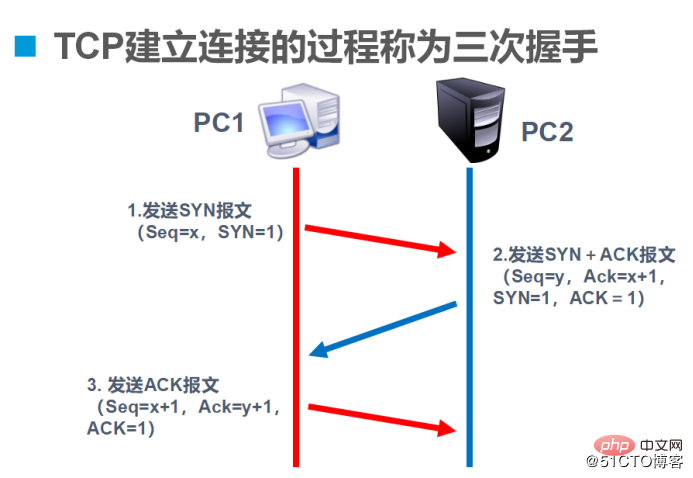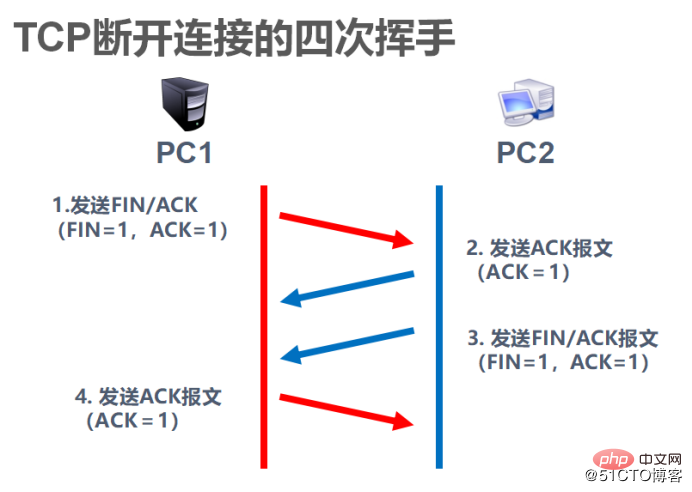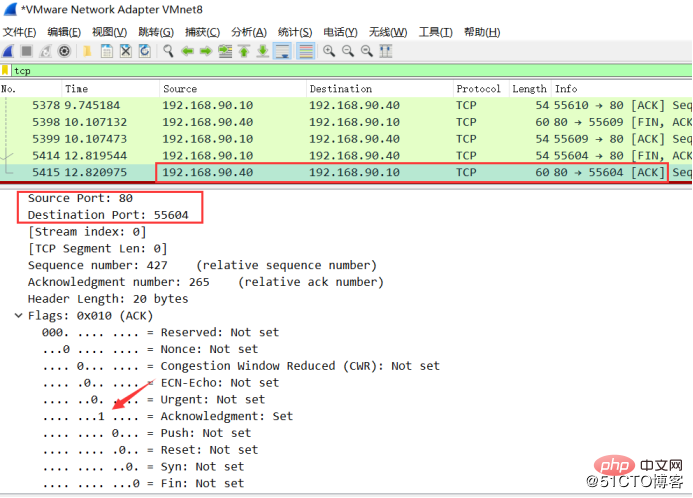

1. TCP (Transmission Control Protocol)
TCP is connection-oriented. A reliable process-to-process communication protocol
TCP provides full-duplex service, that is, data can be transmitted in both directions at the same time
2. TCP segment (encapsulation) In IP datagram)

1, port number
1) Source port number: the port number corresponding to the sender process , the function of the source IP and port is to mark the return address of the message.
2) Target port number: Corresponds to the process of the receiving end. After the receiving end receives the data segment, it maps the data to the application interface based on this port.
Note: The source port number and destination port number in the TCP header are the same as the source IP and destination IP in the IP datagram to uniquely determine a TCP connection.
2. Sequence number: The sending end numbers each byte to facilitate correct reassembly by the receiving end.
3. Confirmation number: used to confirm the information from the sender.
4. Control bits
1) URG: Emergency pointer valid bit.
2) ACK: Confirm sequence number bit. When this bit is 1, it is used to confirm the sender's data.
3) PSH: When the flag bit is 1, the receiving amplifier is required to deliver the data end to the application layer as soon as possible.
4) RST: Re-establish the TCP connection when it is 1
5) SYN: Synchronization sequence number bit, set this value to 1 when TCP needs to establish a connection
6) FIN: When TCP disconnects Set this position to 1
5. Window value: Used to indicate the number of locally receivable data segments. The window size is variable. This controls the rate at which the sending end sends data, thereby achieving flow control.
6. Checksum: used for error control
7. Emergency pointer: The emergency pointer is valid only when the URG flag is set to 1.
8. Options: 40 bytes of optional information located in the TCP header. The most common optional field is the longest message size.
Note: The more important of the 8 fields are the port number, sequence number, confirmation sequence number, and the three control bits of ACK, SYN, and FIN.
3. TCP three-way handshake (packet capture analysis through wireshark)



1) PC2 receives the request from PC1 and replies with a confirmation message to PC1. The sign of this process is that the TCP ACK control bit is 1 and the other five control bits are all 0. , and confirm that the serial number is the initial serial number of PC1 plus 1.
2) PC2 also sends a request to establish a connection to PC1. The flags of this process are the same as the first handshake. The SYN control bit of TCP is 1 and the other five control bits are all 0.

4. Four waves of TCP connection termination

At this time, PC1 is CentOS, and the corresponding IP address is 192.168.90.40. PC2 is a real machine, and the corresponding IP address is 192.168.90.10. Analyze his disconnection by capturing packets. The process is as follows:
1. Wave for the first time

PC1 (server) sends FIN and ACK bits of 1 to PC2 client TCP segment.
2. Wave for the second time

PC2 client returns a TCP segment with an ACK bit of 1 to the PC1 server.
3. Wave for the third time

PC2 client sends a TCP segment with FIN and ACK bits of 1 to PC1 server.
4. Wave for the fourth time

The PC1 server returns a TCP segment with an ACK bit of 1 to the PC2 client, completing the connection termination.
5. The semi-closed concept of TCP four waves (the TCP side stops sending data but can receive it)
1) PC2 client FIN message segment, semi-closed the connection, PC1 server Send ACK segment and receive half-closed.
2) The PC1 server continues to send data, while the PC2 client only sends ACK confirmation and no longer sends any data.
3) When the PC1 server has sent all the data, it sends a FIN segment, and the PC2 client sends an ACK segment, thus closing the TCP connection.
The above is the detailed content of Detailed explanation of TCP's three-way handshake and four-way wave. For more information, please follow other related articles on the PHP Chinese website!